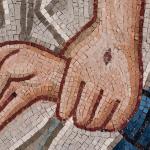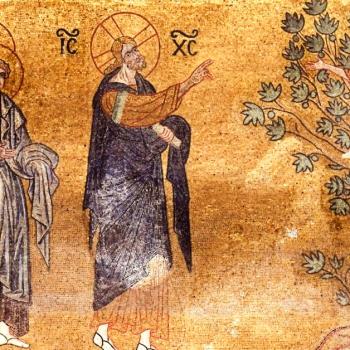
This is the final article of a three-part series proposing a brand-new atonement theology. Follow this link to start from the beginning.
Understanding atonement in Christian theology unveils a wide spectrum of interpretations and debates spanning across time, the geography of the earth itself, and denominational differences.
In contrast to current approaches, I propose an original theology of atonement I call Qualified Restoration atonement, a theory that reframes salvation from the perspectives of divine mercy, restoration, and the transformative power of faith.
Departing from traditional views, this perspective incorporates God’s relentless pursuit of reconciliation and the profound impact of faith. In proposing Qualified Restoration atonement, I aspire to provide a compelling theology rooted in biblical truth, theological reflection, and scholarly analysis.
Together, may we embark on a journey of faith to rediscover the depths of God’s mercy and love, finding hope and redemption through His boundless grace.
Why We Need Atonement
In the biblical narrative of Genesis, the story of Adam and Eve in the Garden of Eden provides an illustration of how knowledge of good and evil exposed humanity’s vulnerability to sin.
Genesis 3:6-7 highlights a pivotal moment when humanity became self-aware and experienced shame after consuming forbidden fruit from the tree of knowledge of good and evil. Their newfound knowledge exposed them to the moral dilemma of disobedience, demonstrating humanity’s attraction to evil.
This is consistent with Jesus’ teaching that sin originates from within us (Mark 7:20-23). We have the freedom to choose good or evil, and even desires for bad acts are considered sin. James 1:13-15 emphasizes that God doesn’t tempt us to sin; it’s our own desires that lead us astray. This passage also highlights the progressive nature of sin, where desires become actions and ultimately lead to death.

The pervasiveness of sin is further explored in Galatians 5:17-21. Here, Paul contrasts the desires of the flesh (sinful nature) with the desires of the Spirit (connection with God). Sinful desires are a constant obstacle, preventing us from wanting this holy connection. Romans 7:21-25 echoes this struggle, with Paul describing himself as a prisoner to sin.
By identifying key characteristics of sin through these scriptures, we are presented not only with a brand-new definition of sin (as I proposed in February), but a narrative:
Knowledge of good and evil exposed humanity’s vulnerability to sin, a pervasive attraction to evil that deprives us of holy connection with God, resulting in our certain death.
This definition emphasizes sin’s internal source, its ongoing influence, and its devastating consequences. It also suggests a need for something beyond ourselves to overcome the problem of evil.
Atonement Is Misunderstood
Atonement acts as the vital link between human brokenness and God’s redeeming love. Yet, understanding salvation has posed a challenge for many Christians, including clergy and theologians.
Part of the problem is because traditional theories of atonement are inadequate representations of scripture and human experience. For example, the Penal Substitution theory popular among Reformed churches turns the crucifixion into a mere transactional event, while the Governmental Atonement theory that Wesleyans tend to favor emphasizes divine justice over mercy, portraying Christ’s death as a sacrifice made to prove a point.
Meanwhile, the Catholic Church and many Mainline Protestant denominations follow a simpler, less legalistic predecessor to Penal Substitution that was proposed by Anselm and expanded by Aquinas called Satisfaction, which theorizes that original sin indebts humanity to God, and Christ’s sacrifice satisfies the debt.
Some Mennonites and other Anabaptists within the past few decades have embraced a twentieth-century theory called Christus Victor, which proposes a revisionist view that Early Church fathers believed Christ’s death on the cross was an exposure of humanity’s cruel, sinful nature, and that his resurrection was a triumph over that sin. Additionally, there are other older variations of all of these, such as Moral Example and Moral Influence as well. All of these form similar conclusions to Governmental atonement through different traditions and reasoning—arguably reducing Jesus and his death to a model or archetype intended to illustrate salvation.

Unfortunately, all of these theories rely upon a flawed doctrine of divine punishment called propitiation which disregards the biblical narrative of God’s reckless pursuit of reconciliation with humanity through love and mercy.
Propitiation is defined in Merriam-Webster’s dictionary as “the act of gaining or regaining the favor or goodwill of someone or something: appeasement.” To make matters worse, the Greek word “hilasmos” (ἱλασμός) along with its cognates have been poorly rendered as “propitiation” in roughly 50% of English translations of the Bible.
What makes propitiation bad theology is because it proposes God must change due to our sin, rather than requiring human transformation.
Propitiation ultimately triggers troubling questions at odds with scripture and experience: Is God unwilling or unable to save humanity without the crucifixion and resurrection? And how could humanity simultaneously have the agency to be accountable for sin, yet obtain salvation without a penitent response?
A New Definition
In earlier articles, I’ve described atonement as a “reckoning” that acknowledges the proportional difference between the sins of all humanity and Christ’s holiness. However, I haven’t precisely defined it. Here’s my simple English language definition of atonement: an act or process that forgives sin.
I propose that this happens through a process of Qualified Restoration.

Unlike commonplace atonement theories, the Qualified Restoration atonement I propose offers a framework for understanding salvation by emphasizing divine mercy, restoration, and the transformative power of faith. Qualified Restoration rejects the notion of viewing Christ’s death and resurrection as a means of appeasing God (propitiation), reframing atonement as an act of divine grace rather than divine retribution.
As I wrote about in my last article, central to Qualified Restoration atonement is the concept of apokatastasis (αποκατάστᾰσις) a compound Greek word meaning “restoration or re-establishment” that can be literally translated as, “to finally raise back up.” This term is found in Malachi 4:6 of the Septuagint (an authoritative Greek translation of the Hebrew Bible), and also in the New Testament (Acts 3:21). In both of these instances, apokatastasis was used to describe God taking action to restore humans.
But what actions save us? And how does that work?
The Gift That Invites a Response
As I wrote about in my last article, apokatastasis is translated in Latin as restitutionis, which still is properly defined as “restoration.” However, the term defines the command itself, not only the resulting actions.
Therefore, I propose that the process of atonement begins with a prevenient act by God when we are presented the opportunity to have relationship with God through the life and teachings of Jesus of Nazareth, the Christ, his death, and resurrection. In this way, Jesus is not merely a representation or an archetype, but God’s loving response to restore the relational connection that is broken by sin.

In the person of Jesus, God lovingly offers humanity a universal way and an actual identity for us to re-connect to God relationally through faith.
Scripture overwhelmingly characterizes Jesus’ presence on earth as a “gift” (John 3:16; John 6:38-39; John 10:17-18; Romans 8:32; Galatians 4:4-5; 1 John 4:9-10; 1 John 5:11-12). By this gift, God acted to save humanity.
This is about so much more than just the narrative events of Christ’s death and resurrection. Just as how we are gifted one another in relationship, in an act of love and mercy, God gave us Jesus and also sent the gift of his Holy Spirit (Luke 11:13; John 14:26; John 16:13-14; Acts 1:8; Acts 2:38; Acts 5:32; Acts 10:44-45; Acts 11:15-17; Galatians 4:6).
If Jesus and the Holy Spirit are God’s gift merciful gift to us, how do we receive that mercy? And what is the purpose of the death and resurrection? What is our response?
Restoration By Faith
I propose that our response to God’s gift of Jesus should be, simply, faith. And that’s exactly what God desires from us.
Christ’s crucifixion, though by no means incidental, wasn’t about satisfying God’s (non-existent) wrath, and Jesus’s death wasn’t intended by God to be an example in any way.
Jesus was an innocent man killed by the Romans. But because Jesus is who he said he was, whatever aspect of his life or death or resurrection that we have faith in becomes a means of forgiveness (ἱλαστήριον).
Romans 3:24-25 (NIV) says:
“[A]nd all are justified freely by his grace through the redemption that came by Christ Jesus. God presented Christ as a sacrifice of atonement, through the shedding of his blood—to be received by faith. He did this to demonstrate his righteousness, because in his forbearance he had left the sins committed beforehand unpunished…”
God offered Jesus to humanity in relational covenant love, and humanity responded by murdering him. Yet this does not lessen, invalidate, or revoke God’s act of mercy: it demonstrates his righteousness, because despite Jesus’ death on the cross, you and I can still respond in faith.
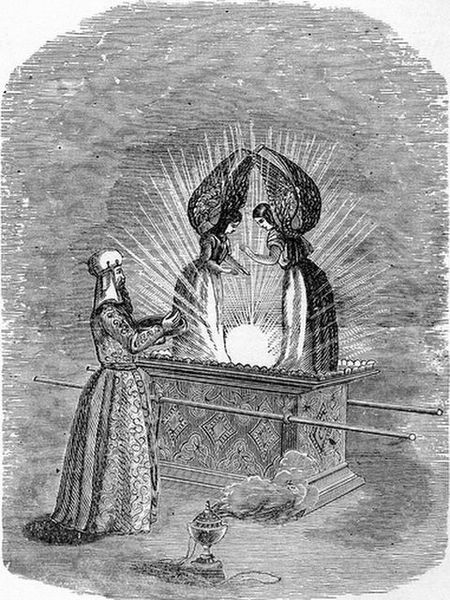
Again, not a single word in the above scripture communicates divine anger or wrath—only that God is merciful, even tolerant (forbearance). Everything indicates that Christ is holy—he was the perfect sacrifice, and Hebrews 4:14-16 even says he is our great high priest. And nothing states that Jesus’ death was a premeditated act by God.
The word “hilastérion” (ἱλαστήριον) here (a cognate of “hilasmos” translated as “sacrifice of atonement”) is actually the same word used in the Septuagint to denote the Mercy Seat of the Ark of the Covenant, a covering upon which the blood of sacrifices was offered on the Day of Atonement by the High Priest in the Holy of Holies.
It did not describe the act of sacrifice itself, but the means for how mercy was bestowed—even in death, our faith in Jesus provokes forgiveness and mercy.
For some, Christ’s teachings provoked faith. Others were stirred by the healings he demonstrated. Some were moved by his prayers, or perhaps his wisdom, his kindness, sensitivity, sadness, anger, or even just his presence.
Surely, some witnessed his senseless, violent death on the cross and were moved by his innocence, his suffering, or his vulnerability. And certainly, many are moved by his resurrection.
But it doesn’t stop there. Jesus promised the Spirit and commissioned his followers to love others as they love God and love themselves and to make disciples by the power of the Spirit. This too provoked faith.
Then as the Spirit moved among the Early Church at Pentecost, faith in Jesus and his Spirit blossomed. The Holy Spirit even today still moves and breathes, and provokes faith through relationship.
Therefore, I propose that faith in Jesus Christ is how humanity may be restored and transformed by God.
This is universally known as “justification by faith,” however I propose that because this process is explicitly extralegal according to scripture, the term “justification” imposes a judicial connotation that, while not wholly unqualified, remains an incredibly narrow and fragmentary characterization.
Our faith does more than merely change an opinion—it transforms and changes us dynamically, and I humbly suggest this unparalleled result should be semantically reframed as “restoration by faith.”
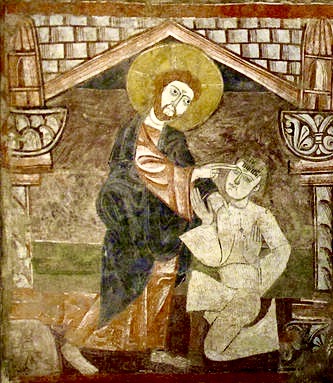
This theology has a rich scriptural heritage. In Romans 3:21-24 and Galatians 2:16, Paul asserts that righteousness before God is attained through faith in Jesus Christ, not by observing the law or performing works. Ephesians 2:8-9 reinforces this, emphasizing that salvation is a gift from God received through faith, not earned through human deeds.
The example of Abraham in Galatians 3:6-9 illustrates that faith, not works, is the basis for righteousness. Additionally, Philippians 3:9 is a personal testimony of relying on Christ’s righteousness through faith rather than one’s own righteousness derived from the law.
Hebrews 11:6 stresses that faith delights God, highlighting belief in His existence and His faithfulness to reward those who seek Him. John 3:16 further emphasizes the centrality of faith in Jesus for obtaining eternal life. It demonstrates God’s love and the offer of salvation to those who believe in Jesus.
And there are other gospel instances where Jesus himself speaks of how faith restores and heals:
- For example, Jesus commended the faith of a woman who had suffered with a bleeding issue for twelve years who touched the hem of his garment (Mark 5:25-34; Matthew 9:20-22; Luke 8:43-48), saying, ”Daughter, your faith has healed you; go in peace.”
- Jesus responded to Bartimaeus’ faith (Mark 10:46-52; Matthew 20:29-34; Luke 18:35-43), saying, “Receive your sight; your faith has healed you.” Immediately, Bartimaeus received his sight.
- When the disciples saw Jesus walking on the sea during a storm (Matthew 14:22-33), they were afraid, but Jesus reassured them, saying, “Take courage! It is I; don’t be afraid.” Peter, demonstrating a moment of faith, asked Jesus to command him to come to Him on the water. Jesus did so, and Peter began walking on the water until he became afraid and started to sink. Jesus rescued him, and said, “You of little faith…Why did you doubt?”
Collectively, these passages affirm that through trusting in Jesus, those who have faith are restored by God because of their belief.
But how does God restore us?
Incarnation and Transformation
I propose that because Christ is holy, then when we have faith in him, his Holy Spirit that he promised lives in us—is born in us.
This is incarnation.
Of course, scripture abundantly presents Christ’s spirit living incarnately in us (Romans 8:10 “Christ is in you”; Galatians 1:16 “his Son in me”; Galatians 2:20 “Christ lives in me”; Galatians 4:19 “Christ is formed in you”; Ephesians 3:17 “Christ may dwell in your hearts through faith”; Colossians 1:27 “Christ in you, the hope of glory”).
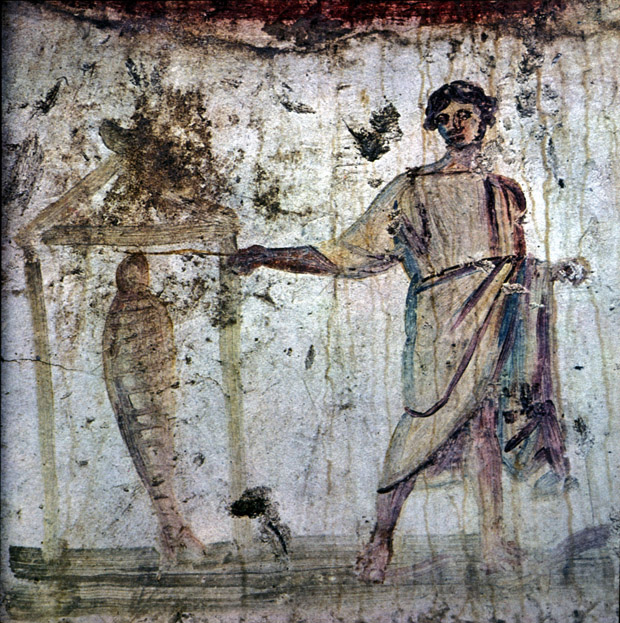
If sin is an absence of God’s holiness as I proposed, then when Christ is born in us and his Holy Spirit lives in us, sin is defeated. Sin had separated us from God, even hidden his face from our sight, but with Christ and his Spirit in us, that connection is restored because there is nothing separates us from God:
“Who shall separate us from the love of Christ? Shall trouble or hardship or persecution or famine or nakedness or danger or sword? As it is written: ‘For your sake we face death all day long; we are considered as sheep to be slaughtered.’ No, in all these things we are more than conquerors through him who loved us. For I am convinced that neither death nor life, neither angels nor demons, neither the present nor the future, nor any powers, neither height nor depth, nor anything else in all creation, will be able to separate us from the love of God that is in Christ Jesus our Lord.” (Romans 8:35-39, NIV)
I propose that this process of restoration transforms humans into a new creation:
“Therefore, if anyone is in Christ, the new creation has come: The old has gone, the new is here! All this is from God, who reconciled us to himself through Christ and gave us the ministry of reconciliation: that God was reconciling the world to himself in Christ, not counting people’s sins against them. And he has committed to us the message of reconciliation.” (2 Corinthians 5:17-19, NIV)
“I have been crucified with Christ and I no longer live, but Christ lives in me. The life I now live in the body, I live by faith in the Son of God, who loved me and gave himself for me. I do not set aside the grace of God, for if righteousness could be gained through the law, Christ died for nothing!” (Galatians 2:20-21, NIV)
Now, let’s synthesize all of this into a dynamic précis:
Qualified Restoration Atonement Defined
Knowledge of good and evil exposed humanity’s vulnerability to sin, a pervasive attraction to evil that deprives us of holy connection with God, resulting in our certain death.
In a mission of love and mercy, God sent his Son, Jesus, so that we would believe in him and be raised up from the depths of sin and death to salvation. Likewise, Jesus acted selflessly and died willingly on the cross as a holy sacrifice, then was resurrected so that we might have faith and be saved.
When we respond to Christ’s death and resurrection with faith in him, we also accept God’s graceful gift of forgiveness and everlasting life, and the Holy Spirit births in us the love of Christ. The holy presence of Christ living in us not only cleanses us from sin but also reconnects us with God, finally restoring humanity to a loving relationship with our creator as a new creation.
By proposing Qualified Restoration atonement, I invite theologians, scholars, and believers to engage in dialogue and reflection. While acknowledging the complexity of atonement theology, I offer this theory as a hopeful and compelling framework for understanding God’s redemptive work in the world.
As we continue to explore the depths of God’s mercy and love, may we be drawn ever closer to the truth of a restored relationship with our Creator.




